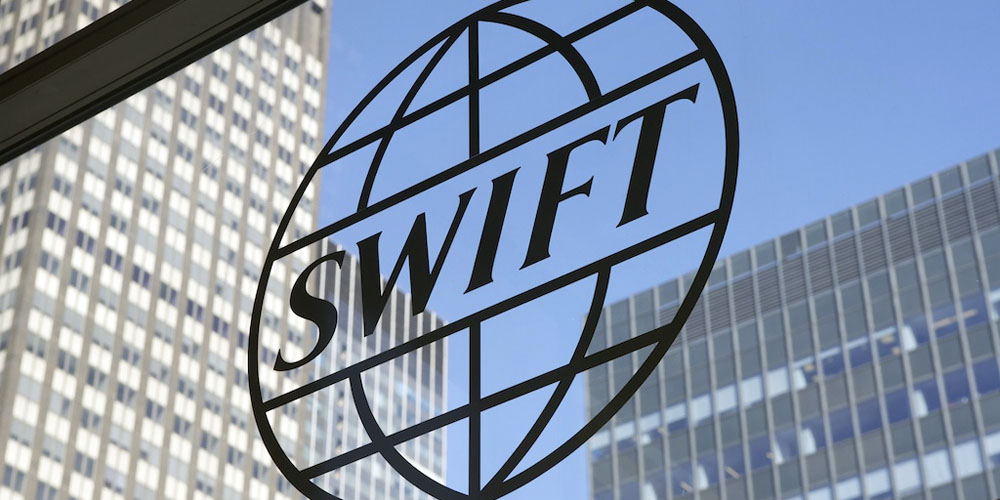The Society for Worldwide Interbank Financial Telecommunication (Swift) has long been the backbone of international financial transactions, facilitating secure and reliable cross-border payments for over four decades. However, the landscape of global payments is rapidly evolving, with new technologies and alternative systems challenging Swift’s dominance. As we look to the future, it is crucial to understand how Swift will adapt and thrive amidst these changes.
Swift’s primary strength lies in its extensive network, connecting over 11,000 financial institutions in more than 200 countries. This vast reach has enabled Swift to process an average of 46.1 million financial messages daily. Despite its established position, Swift faces increasing competition from emerging technologies such as blockchain, cryptocurrencies, and other fintech innovations. These alternatives promise faster, cheaper, and more transparent transactions, posing a significant threat to Swift’s traditional model.
One of the most notable challengers to Swift is blockchain technology. Blockchain offers a decentralized and secure way to conduct transactions, eliminating the need for intermediaries and reducing the risk of fraud. For instance, Ripple, a blockchain-based payment protocol, has gained traction by providing near-instantaneous cross-border payments with lower fees compared to Swift. Ripple’s network includes over 300 financial institutions, demonstrating its growing influence in the global payments arena.
Cryptocurrencies also present a formidable alternative to Swift. Bitcoin, the most well-known cryptocurrency, allows for peer-to-peer transactions without the need for a central authority. This decentralized nature makes it an attractive option for individuals and businesses seeking to avoid the fees and delays associated with traditional banking systems. Additionally, stablecoins, which are cryptocurrencies pegged to stable assets like the US dollar, offer the benefits of digital currencies while minimizing volatility. These developments highlight the potential for cryptocurrencies to disrupt the traditional financial system and challenge Swift’s dominance.
Another significant development is the rise of Central Bank Digital Currencies (CBDCs). Countries like China, Sweden, and the Bahamas have already launched their own digital currencies, while many others are in the research and development phase. CBDCs aim to provide a secure and efficient means of payment, leveraging the benefits of digital currencies while maintaining the stability and trust associated with central banks. The widespread adoption of CBDCs could reduce the reliance on Swift for cross-border transactions, as central banks develop their own digital payment systems.
China’s Cross-Border Interbank Payment System (CIPS) is a prime example of an alternative to Swift. Launched in 2015, CIPS facilitates international payments in Chinese yuan and has been steadily expanding its network. By 2023, CIPS had connected over 1,200 financial institutions across 100 countries, processing transactions worth over $12 trillion equivalent annually. This system not only supports China’s goal of internationalizing its currency but also provides a viable alternative to Swift for countries looking to diversify their payment systems.
India’s Unified Payments Interface (UPI) is another noteworthy example. UPI, launched in 2016, has revolutionized domestic payments in India by enabling instant money transfers between bank accounts through mobile devices. With over 8 billion transactions processed monthly by 2023, UPI has become a cornerstone of India’s digital economy. The Indian government is now exploring the potential of UPI for cross-border payments, positioning it as a competitor to Swift in the international arena.
Russia has also been proactive in developing its own alternative to Swift. The System for Transfer of Financial Messages (SPFS) was created in response to the threat of being cut off from Swift due to geopolitical tensions. By 2023, SPFS had connected over 400 financial institutions, including banks in countries like China, India, and Turkey. This system ensures that Russia can maintain its financial transactions independently of Swift, highlighting the growing trend of countries seeking to establish their own payment networks.
Despite these challenges, Swift is not standing still. The organization has been proactive in embracing new technologies and enhancing its services to remain competitive. Swift’s Global Payments Innovation (GPI) initiative, launched in 2017, aims to improve the speed, transparency, and traceability of cross-border payments. GPI has already seen significant success, with over 1,100 banks adopting the service and processing more than $300 billion in daily transactions. This initiative demonstrates Swift’s commitment to innovation and its ability to adapt to the changing landscape.
Moreover, Swift is exploring the potential of blockchain technology through various pilot projects and collaborations. For example, Swift has partnered with blockchain firm R3 to develop a proof-of-concept for a blockchain-based payment system. This collaboration aims to combine the strengths of Swift’s network with the security and efficiency of blockchain technology, potentially creating a hybrid system that leverages the best of both worlds.
In addition to technological advancements, Swift is also focusing on enhancing its cybersecurity measures. As cyber threats become increasingly sophisticated, ensuring the security of financial transactions is paramount. Swift has implemented a Customer Security Programme (CSP) to help its members strengthen their cybersecurity defenses and protect against potential attacks. This initiative underscores Swift’s commitment to maintaining the trust and confidence of its users.
Looking ahead, the future of Swift will depend on its ability to innovate and adapt to the evolving financial landscape. While emerging technologies and alternative systems pose significant challenges, Swift’s extensive network, commitment to innovation, and focus on security position it well to navigate these changes. By embracing new technologies and enhancing its services, Swift can continue to play a vital role in the global financial system, ensuring secure and efficient cross-border transactions for years to come.
